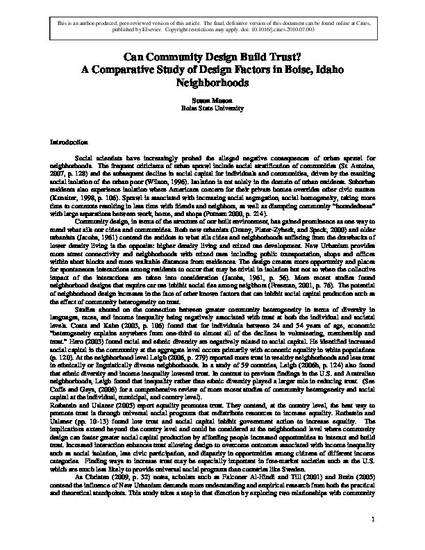
Finding ways to increase trust may be one mechanism to overcome the alleged negative consequences of urban sprawl for neighborhoods. This study explores two relationships with community design and trust. First, is one benefit of some of the underlying concepts of New Urbanism design that they build trust? Second, can these design concepts overcome one undesirable feature of cities: the deleterious effect of income inequality on trust? This study uses survey data collected from 34 city of Boise neighborhoods and 2000 US census data aggregated to the neighborhood level to examine the effects of street design, sidewalks and open space on building trust and moderating the effect of income inequality on trust. The study finds that cul-de-sac designed streets, sidewalks and parks or open space increase trust. There is no evidence that design features actually moderate the effects of income inequality on trust. The findings suggest that local governments can influence the quality of life for residents in their communities through neighborhood design even if municipalities cannot use design to moderate the effects of income equality on trust.
This is an author-produced, peer-reviewed version of this article. © 2009, Elsevier. Licensed under the Creative Commons Attribution-NonCommercial-NoDerivatives 4.0 International License (https://creativecommons.org/licenses/by-nc-nd/4.0/). The final, definitive version of this document can be found online at Cities, doi: 10.1016/j.cities.2010.07.003
Available at: http://works.bepress.com/susan_mason/7/
